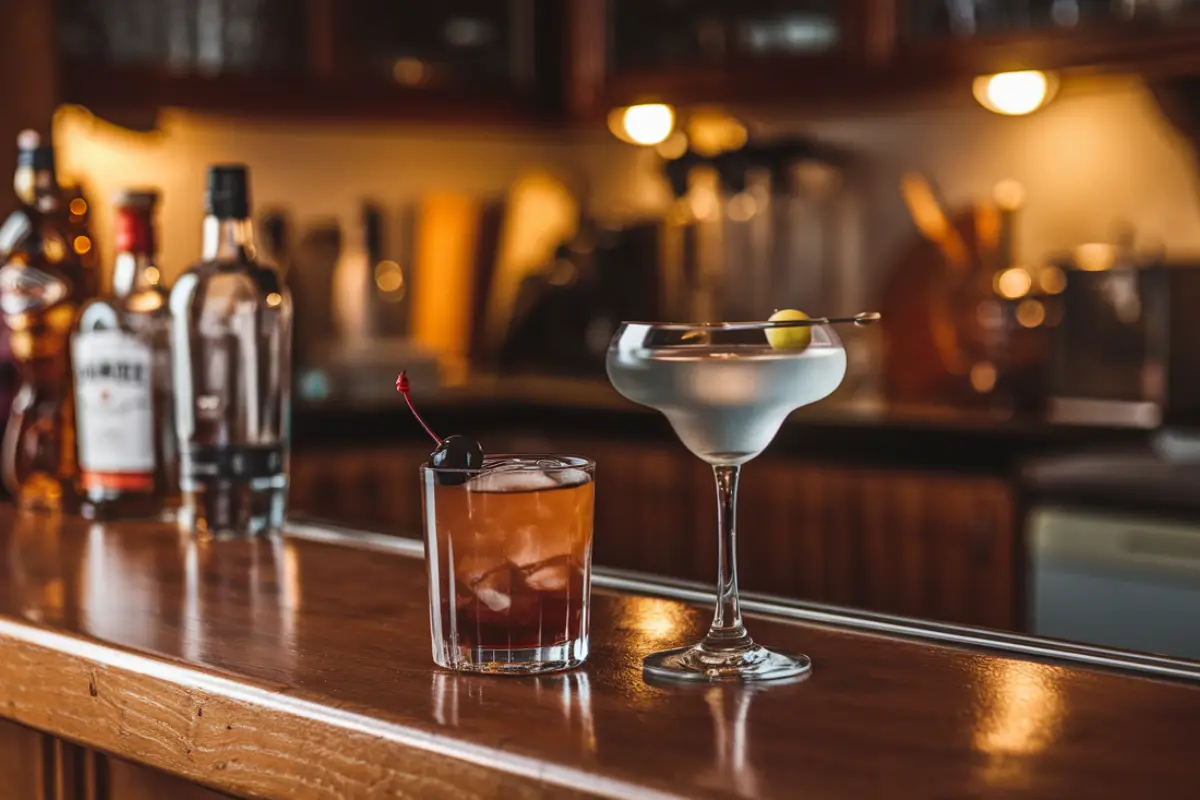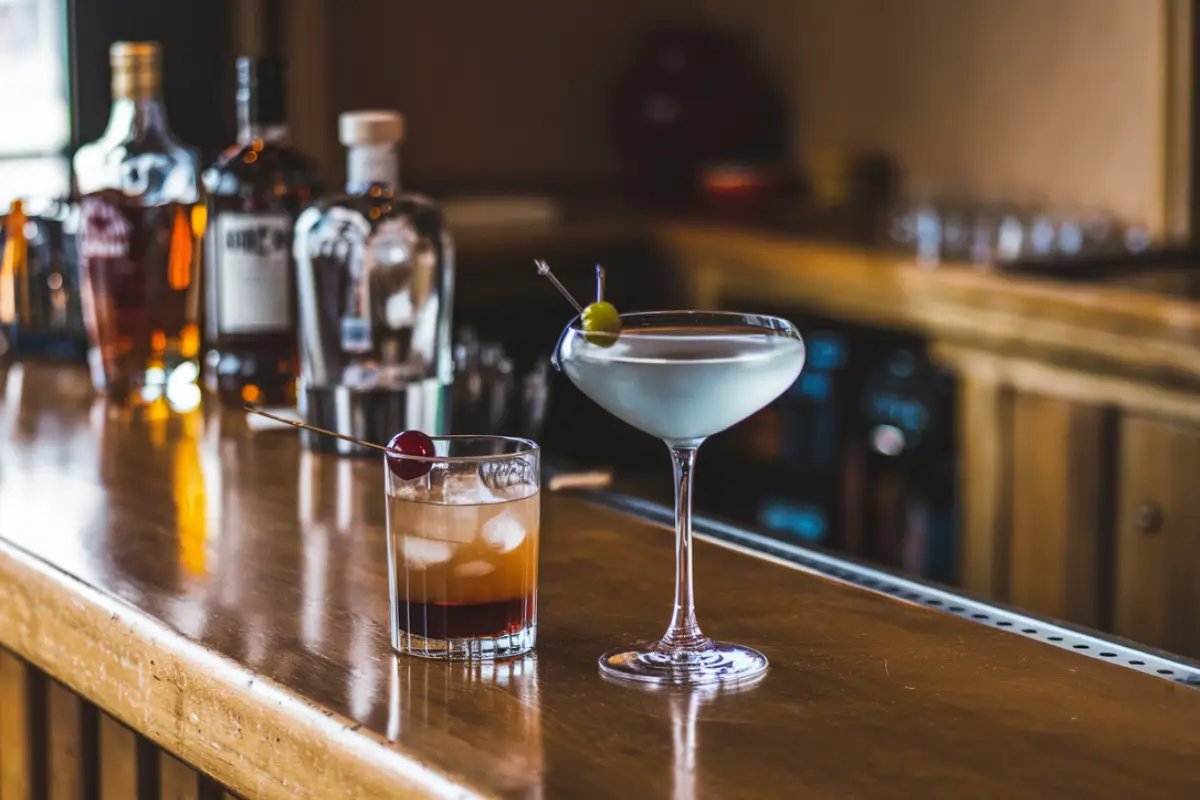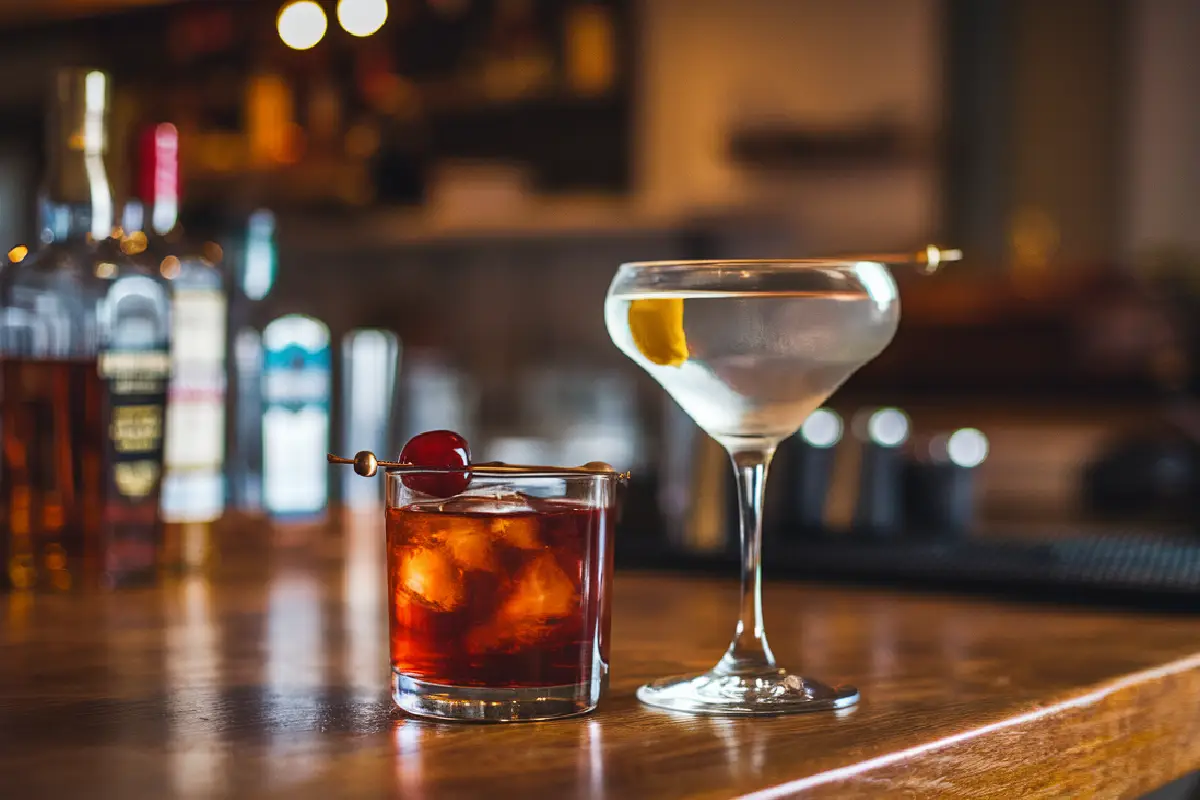The question of whether a Manhattan is just a whiskey version of a Martini is a topic that often intrigues cocktail lovers, sparking debates among bartenders and enthusiasts alike. Both drinks have cemented their status as iconic, spirit-forward classics, each offering a unique blend of history, taste, and cultural impact. The Manhattan and Martini may share structural similarities, such as their reliance on a base spirit paired with vermouth, but their ingredients, preparation methods, and flavor profiles set them apart in significant ways. These differences are not merely technical; they reflect distinct approaches to cocktail-making that appeal to different palates and occasions.
The Manhattan, known for its warm and rich profile, typically combines whiskey, sweet vermouth, and bitters, garnished with a cherry. This combination creates a complex, bold flavor that highlights the depth and spiciness of the whiskey, often seen as a drink of choice in more traditional, classic settings like old-school bars or speakeasies. On the other hand, the Martini, which traditionally uses gin (or vodka) with dry vermouth, emphasizes crisp and clean herbal notes, offering a lighter, more refined drinking experience. Often associated with modern sophistication, the Martini is a staple at upscale bars and is frequently seen in the hands of glamorous characters in films and pop culture. While both cocktails command respect and admiration, their unique attributes make them distinct enough that each stands alone as a staple of cocktail culture, appealing to varied tastes and settings.
The Basics: Manhattan vs. Martini

At their core, the Manhattan and Martini are both elegant, simple cocktails. The Manhattan typically mixes whiskey, sweet vermouth, and bitters, with a cherry garnish. In contrast, the Martini uses gin (or vodka) and dry vermouth, garnished with an olive or lemon twist. Though both drinks have similar structures, their distinct ingredients create different flavor profiles and vibes.
According to VinePair, these classic cocktails stand the test of time due to their balanced and complementary ingredients(VinePair). The Manhattan brings a warm, rich flavor due to whiskey and sweet vermouth. Meanwhile, the Martini highlights gin’s clean, herbal notes, making it crisper and lighter.
Ingredients Breakdown
Each ingredient plays a crucial role in defining the flavor and character of these cocktails:
- Manhattan Ingredients:
- Rye whiskey, bourbon, or Canadian whiskey
- Sweet vermouth
- Angostura bitters
- Cherry garnish
- Martini Ingredients:
- Gin (or vodka)
- Dry vermouth
- Olive or lemon twist garnish
The type of whiskey used in a Manhattan significantly impacts its taste. For example, rye whiskey brings spice and dryness, while bourbon adds sweetness and roundness. Canadian whiskey is smoother and softer, ideal for a less intense experience. On the other hand, the Martini’s gin delivers botanical flavors, which are balanced by the dry vermouth’s subtle bitterness, creating a refreshing drink(The Spruce Eats).
Preparation Methods: Stirred vs. Shaken
One key distinction between these two drinks is how they are prepared. The Manhattan should always be stirred to maintain its clarity and smooth texture. Stirring mixes the ingredients evenly without diluting the bold flavors. Shaking, however, introduces air bubbles that can make the drink cloudy and less elegant(Liquor.com).
The Martini preparation is often debated, largely due to James Bond’s famous “shaken, not stirred” preference. However, bartenders recommend stirring to preserve the smoothness and minimize dilution, which keeps the Martini’s refined character intact. This method allows the gin and vermouth to shine without overpowering the palate.
Flavor Profiles and Taste Differences
The core difference between the two cocktails lies in their base spirits, which significantly influence their flavors:
- Manhattan: Offers a bold, warm blend of whiskey flavors with sweet vermouth and bitters. The cherry garnish adds a touch of sweetness, balancing the spicy notes of the whiskey. This combination creates a complex and sophisticated drink.
- Martini: Highlights gin’s botanical notes, paired with dry vermouth, resulting in a crisp and refreshing drink. The olive or lemon twist enhances the aromas, making it lighter compared to the Manhattan. The Martini’s clean finish makes it ideal as a pre-dinner drink, contrasting with the richer Manhattan.
The History of the Manhattan
The Manhattan has a fascinating history filled with myths and legends. One popular origin story links the cocktail to New York City’s Manhattan Club in the 1880s, possibly created by Dr. Iain Marshall. Another tale involves Lady Randolph Churchill, though records show she was not in the U.S. at that time. Despite these varied origins, the Manhattan has stayed true to its classic mix of whiskey, sweet vermouth, and bitters(Liquor.com).
This consistency reflects the drink’s balanced formula, celebrated for more than a century. It showcases the whiskey’s character with subtle support from vermouth and bitters, demonstrating the craftsmanship of this timeless cocktail.
Variations of the Manhattan and Whiskey Martini
Both the Manhattan and Martini have inspired numerous variations that add unique spins to the classics:
- Manhattan Variations:
- Perfect Manhattan: Uses equal parts sweet and dry vermouth for a balanced twist, making it slightly drier and more refined.
- Brandy Manhattan: Swaps whiskey for brandy, adding a softer, fruitier flavor.
- Rob Roy: Uses Scotch whisky instead of rye or bourbon, creating a smoky twist on the Manhattan.
- Martini Variations:
- Dirty Martini: Adds olive brine for a savory kick, appealing to those who enjoy a saltier profile.
- Vesper: Combines gin, vodka, and Lillet, offering a more layered flavor made famous by James Bond.
- 50/50 Martini: Uses equal parts gin and vermouth, making it milder and more approachable.
These variations show the versatility of each cocktail, allowing drinkers to explore new flavors while staying true to the classic core elements.
Cultural Significance and Popularity
The Manhattan and Martini are more than just drinks—they are cultural icons. The Manhattan is often associated with classic bars, speakeasies, and a sense of old-world elegance. Its warming profile makes it a popular choice for those who appreciate whiskey-based drinks.
Meanwhile, the Martini has become a symbol of luxury and sophistication, often seen in movies and TV shows as the drink of choice for the stylish and powerful. The Martini’s association with glamour has helped it remain relevant and celebrated in modern pop culture, reinforcing its image as more than just a cocktail.
The Martini vs. Manhattan Debate
The debate between choosing a Manhattan or a Martini often comes down to personal preference. The Manhattan’s bold flavors cater to those who enjoy a deeper, spicier profile, while the Martini’s clean, botanical notes appeal to fans of lighter, refreshing cocktails. Both drinks are celebrated for their ability to showcase their base spirits, making them ideal for discerning drinkers who appreciate classic, straightforward cocktails.
Tips for Making the Perfect Manhattan
Creating the perfect Manhattan involves attention to detail, from ingredient quality to preparation technique:
- Choose Your Whiskey Wisely: The choice of whiskey greatly affects the flavor. Rye whiskey offers a drier, spicier taste, while bourbon provides a sweeter, rounder profile. Experiment with different brands to find your ideal balance(Martha Stewart).
- Use High-Quality Vermouth: Vermouth quality is crucial and can significantly impact the final drink. Choose a reputable sweet vermouth, and store it in the fridge after opening to keep it fresh.
- Don’t Forget the Bitters: Bitters add essential depth to the Manhattan. Angostura bitters are the classic choice, but experimenting with others can enhance your cocktail.
- Stir, Don’t Shake: Always stir your Manhattan to keep it smooth and clear. Stirring allows the flavors to integrate well without diluting the drink.
- Garnish Thoughtfully: The classic garnish is a cherry, but high-quality cocktail cherries, like Luxardo, can elevate the drink. Avoid processed maraschino cherries, which can introduce unwanted artificial flavors.
FAQs about Is a Manhattan Just a Whiskey Martini?
- What’s the main difference between a Manhattan and a Martini? The main difference is the base spirit: a Manhattan uses whiskey, while a Martini uses gin or vodka.
- Can you make a Manhattan with gin? Technically, you could, but it would resemble a Martini variation rather than a true Manhattan.
- Is a Perfect Manhattan the same as a Martini? No, a Perfect Manhattan uses both sweet and dry vermouth but still relies on whiskey as the base.
- Why do some Manhattans taste sweeter than others? The sweetness can vary depending on the type of whiskey used and the ratio of vermouth.
- What’s the best whiskey to use for a Manhattan? Rye whiskey is traditional, but bourbon and Canadian whiskey are popular alternatives.
Conclusion

The Manhattan and Martini may share some structural similarities, but they are distinct cocktails with their own unique characteristics. The choice of base spirits, preparation methods, and garnishes define their individual personalities, catering to different preferences. Whether you prefer the Manhattan’s spicy warmth or the Martini’s crisp, botanical flavors, both offer a classic and sophisticated experience that continues to captivate cocktail lovers worldwide.
Each sip of a Manhattan or Martini tells a story of tradition, craftsmanship, and personal taste. Understanding the nuances of these cocktails allows you to enjoy them more deeply, whether you’re ordering at a bar or mixing one at home. So next time you find yourself choosing between a Manhattan and a Martini, remember that each drink is more than just a recipe—it’s a piece of cocktail history, ready to be savored.

